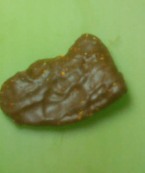Most people I talk to wish they could say “No” more effectively. We know we should, but the people who are asking are family or friends, people we love and don’t want to disappoint. So we say “yes” or “just this once” and the pressure mounts.
What to do? I’ve tried to say “No” only to be met with various replies, from ones that generate a big load of guilt to ones that tell me how long the favor will take–and it’s always “15 minutes, max.” Of course nothing in the real world can be done in that time (well, maybe brushing your teeth), but sure enough, it makes you want to agree.
So here is a technique that works. It’s not easy, but it’s easier than saying “yes” and exhausting yourself or heaping stress on yourself. Because that’s what we are doing–when we say “yes” when we should say “no” we are the generator of our own stress.
1. Listen to the entire request. Cutting the speaker off before they are done only makes them more demanding and insistent.
2. Re-phrase what they want you to do. This is important so you can understand what is being asked of you. Frequently, people asking favors use diminishing language (words like only, just, little, quick, easy) and you hear that instead of the task.
3. Agree, but set a time limit. If you WANT do what is asked of you, and you CAN do it, agree but give yourself plenty of time. This includes setting a time you will spend on the task. For example: “So you want me to take you shopping for a used car? I can come with you from 2 to 4 on Saturday. How does that sound?” or “You want me to proofread your marketing letter? Sure, I’ll be able to get to it on Monday, the 18th, and complete it on the 21st. Does that sound OK?”
Notice that in each case you are asking if the time is agreeable. If not, you have a great excuse to turn it down. If the person wants more of your time or a faster deadline, you can decline, having offered what is possible.
4. If you don’t want to or can’t, suggest someone else. “I can’t go on Saturday, but you might want to ask Joe, he knows a lot about cars.” Suggesting some other solution helps the other person walk away and makes you helpful.
5. If you can’t suggest someone else, say no without giving a reason. And express regret. “I wish I could help you, but it’s not possible at this time.” “Oh, Mary, I sure wish I could help, but I just can’t. Please ask me again next time you need help.” It’s important not to give a reason, because the other person will brush your reason aside, because it is not important to them. Then you are left thinking up another excuse or arguing, neither of which works.
6. You will probably hear, “Why? What else are you doing?” This is hard, because we are not used to protecting our privacy anymore. We are instantly accessible by cell phone, Instant Messaging, Facebook, Twitter, and texting. Saying “No” feels naked. And a lie is almost impossible, because we’ll be found out through social networks. So the only answer is “I’m afraid I’m busy with something else.” And stick to that. When asked “Well, what is it? Why won’t you tell me?” you’ll remember that having a completely open, accessible life has drawbacks, and make some changes. But for now, you can say, “That’s not the point. I just want to be really clear I can’t help you with XYZ. I hope you find someone, though.” Of course, this isn’t something you can say to your boss at work. We’re talking friends and family here.
There are times when you will have to choose between two “No’s” or say “No” more often than your guilt-meter wants you to, but remember that even in an airline emergency, when the yellow oxygen masks drop in front of you, you are supposed to help yourself first, then those around you. That’s a good image to keep in mind.
—Quinn McDonald is a life- and creativity coach who teaches people how to talk to each other.


















